Description
Gina is a type of local hormone replacement therapy (HRT) used to help manage the symptoms of menopause.
- It is for women who are over 50 and have not had a period for at least 1 year.
- It is a local vaginal HRT, which means it does not circulate in your blood, but treats the area it’s been used on.
- It is a low-dose oestrogen tablet containing the active ingredient estradiol hemihydrate.
Gina tablets come pre-loaded into an applicator which is inserted into your vagina before releasing the tablet. The tablets slowly dissolve to release oestrogen into your vaginal tissue, replacing the reduced hormones. It’s the first ever HRT for post-menopausal people that’s available over the counter without a prescription.
What is Gina used for?
Gina is used in treating one of the most common symptoms of menopause – vaginal atrophy or urogenital atrophy. Vaginal atrophy is a term used for when your vagina becomes dry, sore or itchy, and it can also make sex painful. Vaginal atrophy usually occurs when your oestrogen levels drop during menopause, thinning the tissue around your vagina. By taking Gina, you replace the oestrogen you’re missing to improve and get rid of your symptoms.
Uses / Instructions
Gina is inserted directly into your vagina using a preloaded applicator. You will start out taking 1 tablet each day for the first 2 weeks of treatment. After the first 2 weeks, you will take 1 tablet twice a week. You can take Gina at any time of the day, but you should try to make sure it’s at the same time every day.
Make sure you always follow the instructions in your patient information leaflet, and if you are still not sure about your dose or how to use the medication, you should speak to your doctor or pharmacist.
Using the applicator
- Make sure your hands are clean and dry
- Take out a single applicator
- Hold the applicator so that one finger can press the ‘applicator plunger’
- Get into a comfortable position and prepare to insert the applicator
- Insert the applicator slowly into your vagina
- Gently press the end of the applicator (the plunger) all the way in. This will release the tablet
- Slowly remove the applicator from your vagina
- You should continue taking Gina for as long as your symptoms persist or as long as the doctor tells you to.
- If you stop taking Gina and your symptoms come back, it’s safe to start taking Gina again.
- If you forget to take a dose, take it as soon as you remember. Do not take a double dose.
- You can stop taking Gina at any time, but doing so may cause your symptoms to come back.
Warnings
Gina isn’t suitable for everyone. It is recommended only for women who are over 50 and have not had a period for at least 1 year. Some conditions and medications can also make Gina less effective or possibly unsafe for you to take. If you’re concerned about starting Gina because of another condition or medication, you should speak to a doctor first.
Do not use Gina if:
- You are allergic to estradiol or any of the other ingredients of Gina
- You have or have ever had womb or ovarian cancer
- You have symptoms like vaginal bleeding or pain, bloating or swelling in your lower abdomen or pelvis that you have not told your doctor about.
- You have had any vaginal bleeding since your periods stopped due to menopause.
- You have or may have endometrial hyperplasia
- You have previously been treated with an oestrogen-only HRT and have not had your womb removed (hysterectomy).
- You have noticed any changes in your vagina such as thickening or a lump, or any shrinking or scarring.
- You have a current vaginal infection
- You have a condition called ‘vulval dermatoses’
- You have severe vaginal itching, itchy patches or rash.
- You have or have ever had breast cancer
- You have or have ever had a blood clot
- You have or have recently had a disease caused by blood clots in the arteries, such as a heart attack, stroke or angina.
- You have a blood clotting disorder
- You have or have ever had liver disease, and your liver function tests have not returned to normal.
- You have a rare blood problem called ‘porphyria’, which is passed down in families (inherited)
Talk to your doctor if you have any of these conditions before starting Gina if you have:
- a history of endometriosis
- You have a history of endometrial hyperplasia
- You are receiving a type of HRT (including tablets or patches) that circulates in the blood
- You are switching from another vaginal oestrogen HRT
- You may also want to talk to your doctor if you’re taking Gina and have:
- Uterine fibroids (Leiomyoma)
- An increased risk of developing blood clots
- Increased risk of getting womb, ovarian or breast cancer
- High blood pressure
- Liver disorders, such as a benign liver tumour
- Diabetes
- Gallstones
- Migraines or severe headaches
- Systemic lupus erythematosus (SLE)
- Epilepsy
- Asthma
- A disease affecting the eardrum and hearing (otosclerosis)
- A very high level of fat in your blood (triglycerides)
- Fluid retention due to cardiac or kidney problems
- Hereditary and acquired angioedema
Side Effects
Common side effects of using Gina (affecting 1 in 10 people):
- Headache
- Stomach pain
- Vaginal bleeding, discharge or discomfort
- Uncommon side effects of using Gina (affecting 1 in 100 people):
- Fungal infections
- Nausea (Feeling sick)
- Rashes
- Weight gain
- Hot flushes
- High blood pressure
Rare side effects of using Gina (affecting 1 in 10,000 people):
- Diarrhoea
- Water retention
- Worsened migraines
- Generalised hypersensitivity (e.g. anaphylactic reaction/shock)
Stop using Gina and speak to your doctor as soon as you can if you get any of the below:
- You get any new vaginal bleeding, spotting or itching.
- You have endometriosis, and your symptoms come back.
- You develop a vaginal infection
- You get yellowing skin or the whites of your eyes (jaundice). These can be signs of liver disease.
- Your blood pressure rises (may cause headaches, tiredness, and dizziness).
- You start to get migraine-like headaches for the first time.
- You become pregnant.
If you get any side effects that could indicate an allergic reaction to Gina, stop taking it and get immediate medical attention.
Ingredients
The active substance is estradiol 10 micrograms (as estradiol hemihydrate). Each vaginal tablet contains 10 micrograms estradiol (as estradiol hemihydrate).
– Other ingredients are: hypromellose, lactose monohydrate, maize starch and magnesium stearate.
– The film-coating contains: hypromellose and macrogol 6000.

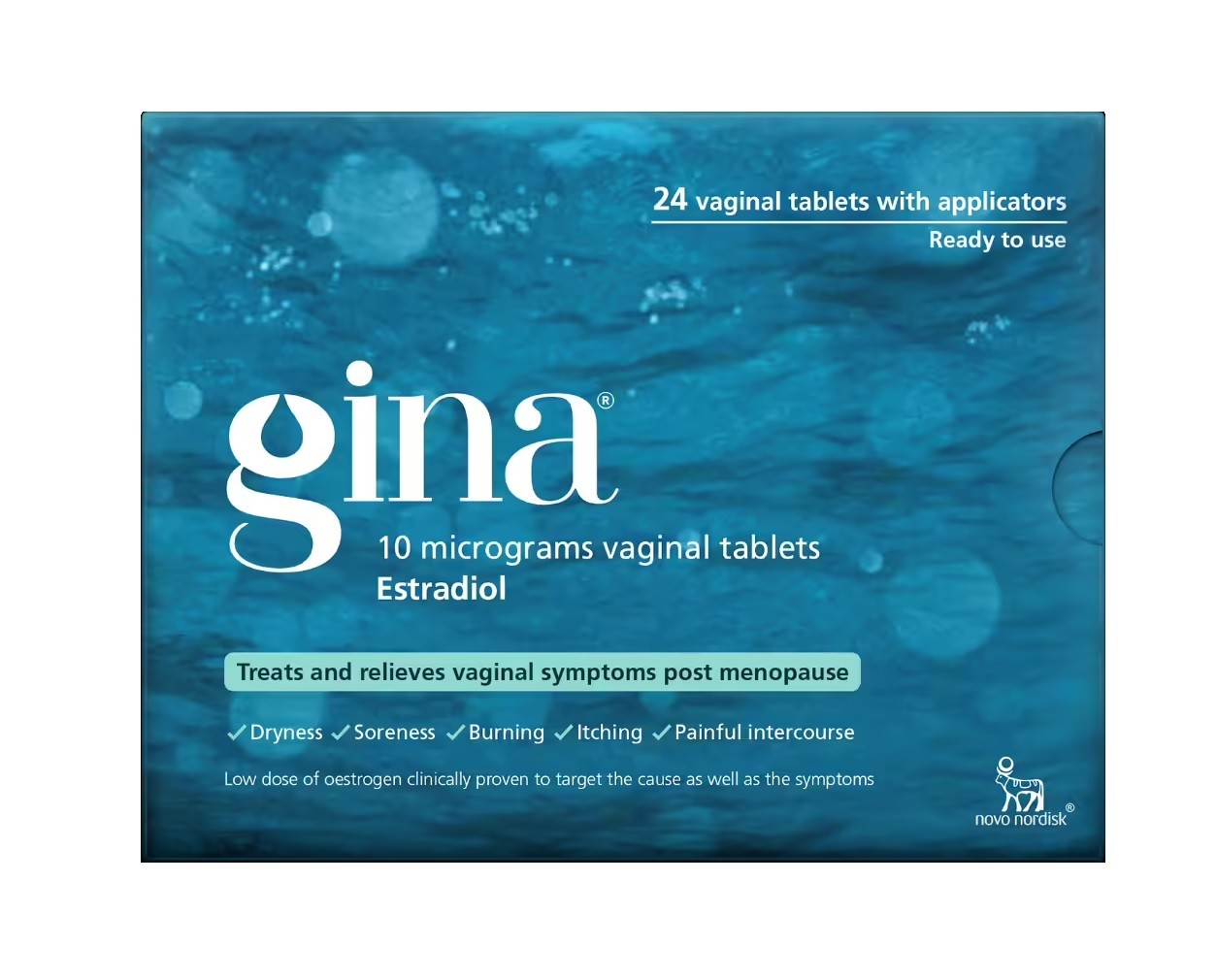


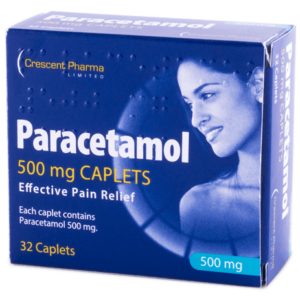
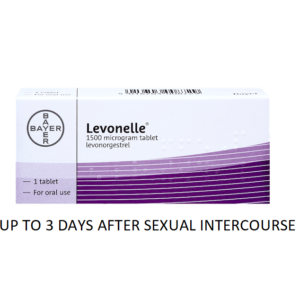
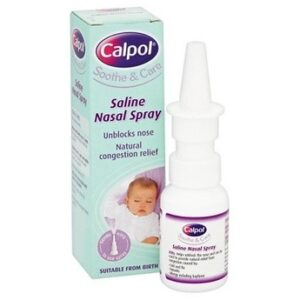

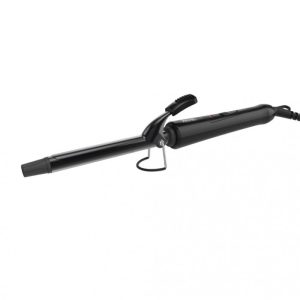

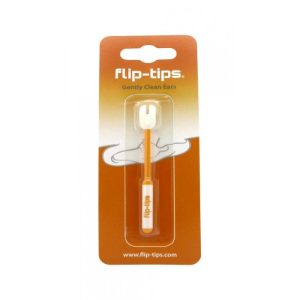




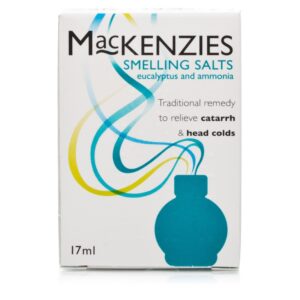


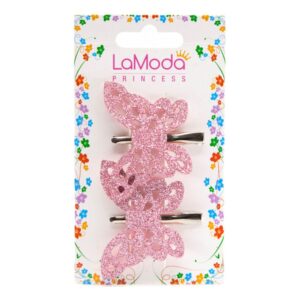


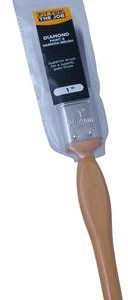


Reviews
There are no reviews yet.